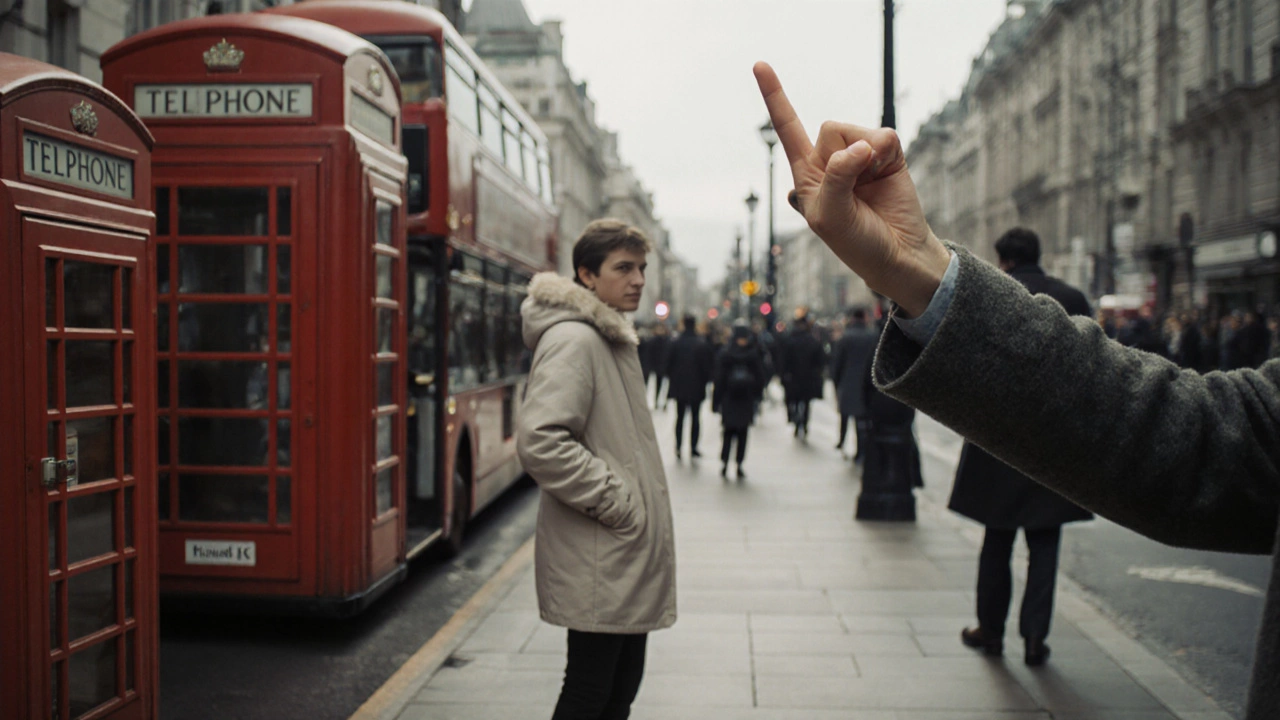Meaning of Bad Finger – What It Really Says
When talking about meaning of bad finger, the phrase refers to the offensive hand sign where the middle finger is extended upward, often used to express anger or contempt. Also known as the middle‑finger gesture, it has carved a spot in everyday hand gestures, simple movements of the fingers that convey meaning without words across cultures.
This sign isn’t just about shock value; it ties into broader British slang, the informal, often cheeky language and expressions popular in the UK. Knowing the slang helps you see why the "bad finger" pops up in movies, memes, and casual conversations, especially when someone wants to make a point without saying a word.
Beyond slang, the gesture sits firmly in the realm of nonverbal communication, the way we share feelings and intentions through body language rather than speech. Researchers note that nonverbal cues like this can be more powerful than spoken insults because they bypass filters and hit straight at the emotional core.
Why Context Matters
In most Western settings, flashing the bad finger signals a clear rejection or a challenge. However, the same hand shape can hold different meanings elsewhere – in some places it’s a joke, in others it’s just a random finger pose. The context‑dependency is a classic example of how hand gestures meaning shifts with cultural background, audience, and setting.
For example, the gesture often appears in UK pop culture, from comedy sketches to music videos, reinforcing its link to British slang. When a comedian uses it, the audience instantly gets the punchline because they share the same cultural frame. This demonstrates the semantic triple: "British slang influences the meaning of bad finger," and "nonverbal communication conveys the emotional tone behind the gesture."
Understanding the origins also helps you gauge the risk. In professional environments, even a light‑hearted use can backfire, leading to accusations of harassment or disrespect. So, the etiquette around the bad finger is shaped by both the historical roots of hand gestures and modern workplace norms.
Many people mistakenly think the gesture is a new invention, but historical records trace its roots back to ancient Rome. This long lineage shows how certain nonverbal signs survive across centuries, adapting their significance as societies evolve. That longevity is why it still feels relevant today, especially in online memes where a single image can spread faster than any news article.
If you’re curious about how to read other similar signs, consider the whole set of hand gestures used in everyday life: thumbs‑up for approval, the peace sign for harmony, or a clenched fist for solidarity. Each belongs to the same nonverbal language family, and mastering them gives you a hidden edge in social interactions.
Below, you’ll find a mix of articles that touch on the cultural side of gestures, the slang that fuels them, and practical tips for handling nonverbal cues in different settings. From UK slang breakdowns to broader lifestyle pieces on communication and etiquette, the collection gives you a well‑rounded view of why the "bad finger" still packs a punch.
Ready to dive deeper? Keep scrolling to explore the full range of insights we’ve gathered – from the cheeky origins of the gesture to smart ways to navigate it in everyday life.
Learn what the 'bad finger' means in England, why it's offensive, and how to handle it while traveling. Get clear examples, a handy gesture cheat sheet, and tips to stay smooth on your UK trip.






